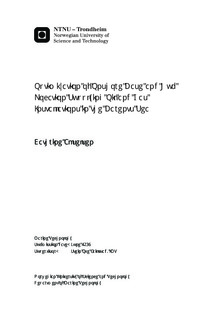| dc.description.abstract | This report present an academic study of a location-routing problem combined with the fleet size and mix vehicle routing problem. Operations research (OR) is utilized to examine a concept of Statoil s supply logistic for oil and gas installations in the Barents Sea where a hub-networks is included.The aim of this thesis is to utilize OR to determine whether it is cost-efficient for Statoil to make use of a hub system in the Barents Sea to supply three offshore installations.A simplified realistic problem is developed to define scope and limitations for the study. It comprise a set of three offshore installations and seven potential base locations. The optimal location of exactly one onshore supply base and one forward offshore base, hub, are determined. The installations are placed within given locations in the Barents Sea. The range of area span from 21°E to 36°E in longitudinal direction and from 71°N to 74°N in latitudinal direction. All facilities are open round the clock and the problem is assumed deterministic.The report present a two stage solution approach. In Phase 1, all routes are generated and parameters are calculated. In Phase 2, a set partitioning problem is solved, where routes generated in Phase 1 constitute as the columns. For comparison reasons, Phase 1 defines parameters for two different logistical scenarios. A hub-network is included in Case 1 and excluded from Case 2. Both cases build on equal assumptions and simplifications. The results from the two cases are implemented separately in a integer programming model presented in Phase 2. Results from the model are finally compared. The process is repeated a number of times, varying in the location of the offshore installations. The main results show that direct shuttle is more profitable than utilization of a hub-network for three installations. The optimum transportation costs are 6,8 million NOK and 2,2 million NOK for Case 1 and 2 respectively. Two PSVs are required for direct shuttle, where four different supply bases are optimal depending on the locations of the offshore installations. For Case 1, the Polarbase in Hammerfest is the optimal base location independent of the positions to the installations. The longest distance between optimal base and hub location is 160 [nm].The results from the study indicate that logistic supply with hub-network is not profitable. Direct shuttle is more cost efficient for the given distances when three installations are supplied. | nb_NO |

